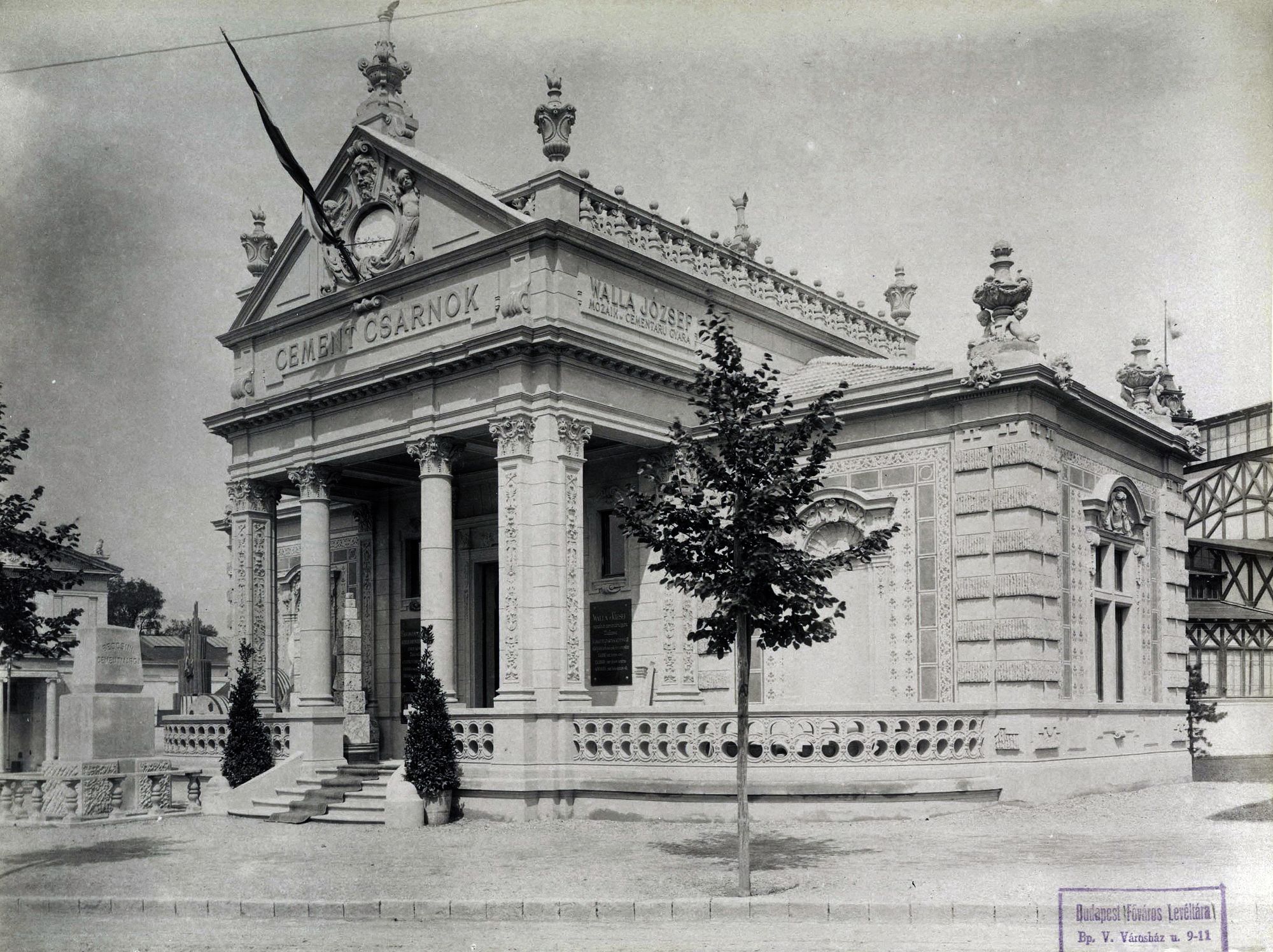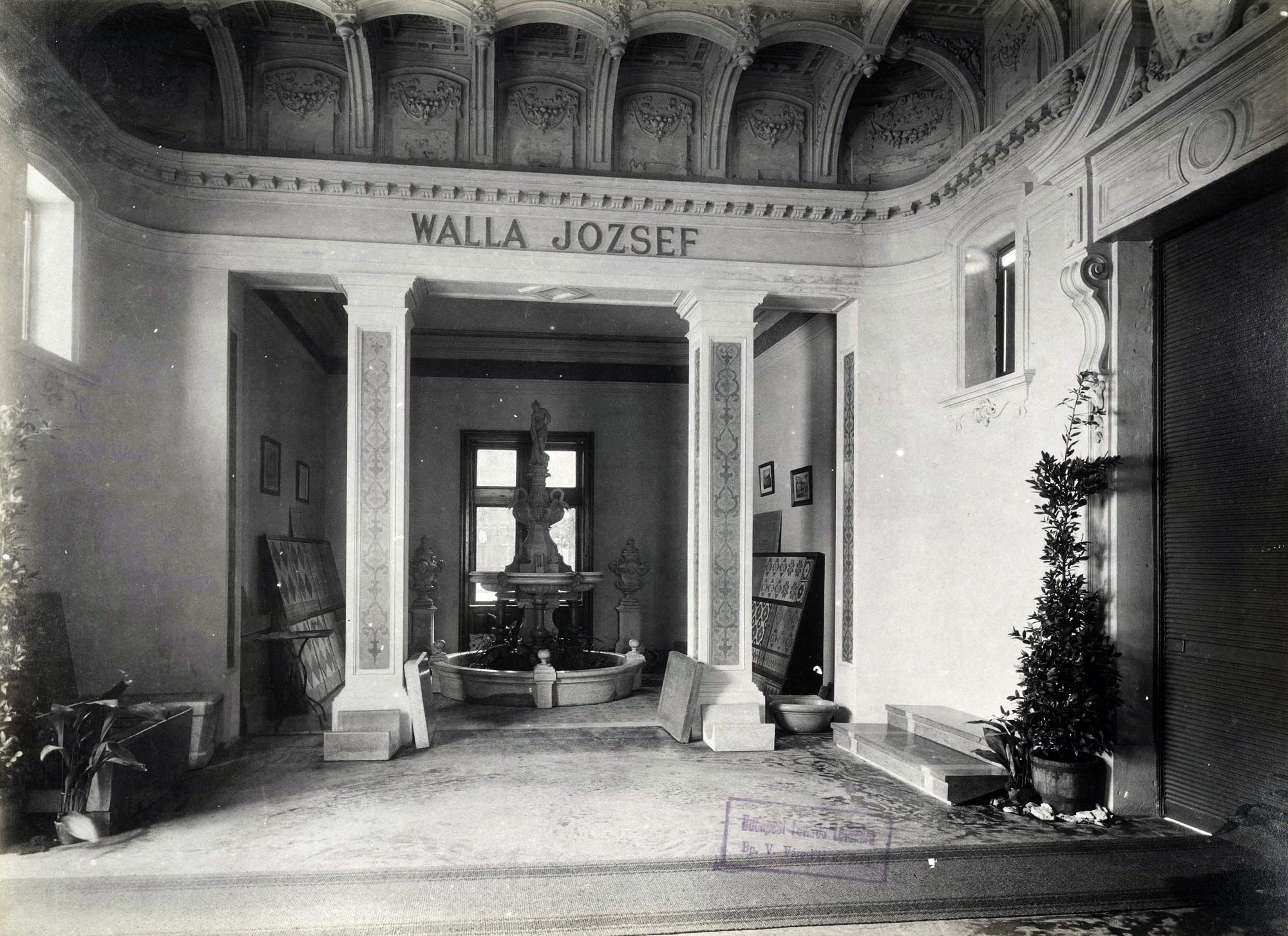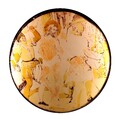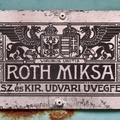Joseph Walla (1855-1920) owned a successful factory of cement- and cast stone in Hungary at the time of the Austro-Hungarian Empire. By the turn of the century his business gained immense popularity because factory-made cement and mosaic panels became widespread in Budapest as well as in the whole country.

In this article we investigate the Walla business’ route to success, but first we should clarify the reason behind choosing him amongst all the significant industrialists of his time. Joseph Walla was not only Miksa Róth’s father-in-law but also his godfather. Walla’s illegitimate daughter, Jozefin married Miksa Róth and on account of their matrimony Jozefin was officially granted the right by her father to bear the Walla name. Joseph Walla became Miksa Róth’s godfather, after Miksa - who was of Jewish origin - out of respect for the catholic faith of the Walla family, got baptized in 1897 and chose Joseph Walla as his godfather.
Before examining the career of Joseph Walla, it is worth looking at the situation of the Hungarian construction industry and especially of the cement industry in the period. In 1890 there were 1129 large factories with more than 20 employees, but only 206 “actual” large factories employed over 100 workers in the manufacturing and construction industries. 73% of the workers were employed by small businesses which makes them the majority of those working in the industry. In most cases small plants used traditional methods to manufacture their products, while the newly launched large factories applied new, modern technology which created - in the words of László Katus - an economic dualism, since the two types of plants coexisted but on different levels of development.
The blooming of the construction industry brought about the development of the cement factories thanks to the Millenium Celebrations of 1896, industrialisation, the construction of the capital and urbanisation. Until the turn of the century cement in most cases was produced using the grinding method of windmills. At the turn of the century modernization and automatization of cement factories began which was necessary due to the high demand of building materials. In Hungary the cement industry often imported machines and raw materials for the production of cement from countries like Great Britain or Germany.
The career of Joseph Walla started in this era, characterized by change and evolution of economy and industry. Thanks to his business skills and the opportunities offered by the period, he soon became a significant entrepreneur. After finishing secondary school and the Industrial Design School (Iparrajziskola), he began working with a builder named Jahn until 1878, when he became self-employed. His first cement goods and building materials warehouse operated in the 7th district (Terézváros), on Gyár street 15. (Jókai street today) but in 1883 he moved his business to Gyár street 23. Later on, his enterprise changed locations again and could be found at Rottenbiller street 13., and by the end of the 1890’s the demand for his products grew so much that he had to open a new factory site at Gizella road.
By the 1890’s products of the Walla-factory became widespread throughout the country. Advertisements of the company can be found in local newspapers in the countryside proving its nation-wide popularity. The following excerpt from an article from the newspaper Esztergom és Vidéke is a good example.
“The good reputation of Joseph Walla is recognized throughout the country. His works and enterprises gained complete satisfaction everywhere. His factory of cement goods and warehouse of building materials is one of a kind and the largest in the country. His large-scale equipment allows him to execute his orders in the most cost-efficient way.”
In 1986 at the millennium exhibition the Walla-factory shared a pavilion with the Unio Cement factory of Beočin. This shows how successful his company had become. The cement pavilion, planned by Ignác Alpár, was described by the newspaper Vasárnapi Ujság in the following way:
“On the open terrace and inside the pavilion the Walla company put many of their factory’s products on display. The execution and the beautiful harmony of colors on the cement and marble mosaic panels can hardly be outperformed. The shells, columns, stairs, wallboards and fountains made of cement and marble mosaics deserve special recognition. Walla produces particularly beautiful things in the highly demanded Portland-concrete sewer pipes, and the fountain inside the pavilion is a beautiful work of cement and mosaic manufacture.”

Walla’s success was rewarded with the Exhibition Grand Award in 1895 and 1896.
In addition to tenements, he also worked on famous buildings like the Castle of Alcsút, Rókus Hospital, Ganz factory, Dreher factory or the Royal Palace of Gödöllő. The hall of the former home of Miksa Róth on Nefelejcs street (now Róth Miksa Memorial Home and Collection) is also ornamented with cement panels of the Walla factory.
Numerous products and works of Joseph Walla’s factory – made in the last decade of the 19th century and at the turn of the century - can still be found both in the capital and in the Hungarian countryside, showing us the popularity and the high quality of the well-rewarded work of the Walla enterprise.
In the history of the Walla company 1908 was a significant milestone, as the owner turned it into a joint-stock company from which he in fact withdrew in 1910, but the factory continued to bear his name.
__
Photo: Fortepan / Budapest Főváros Levéltára. Levéltári jelzet: HU.BFL.XV.19.d.1.10.043 / Klösz György fényképei



